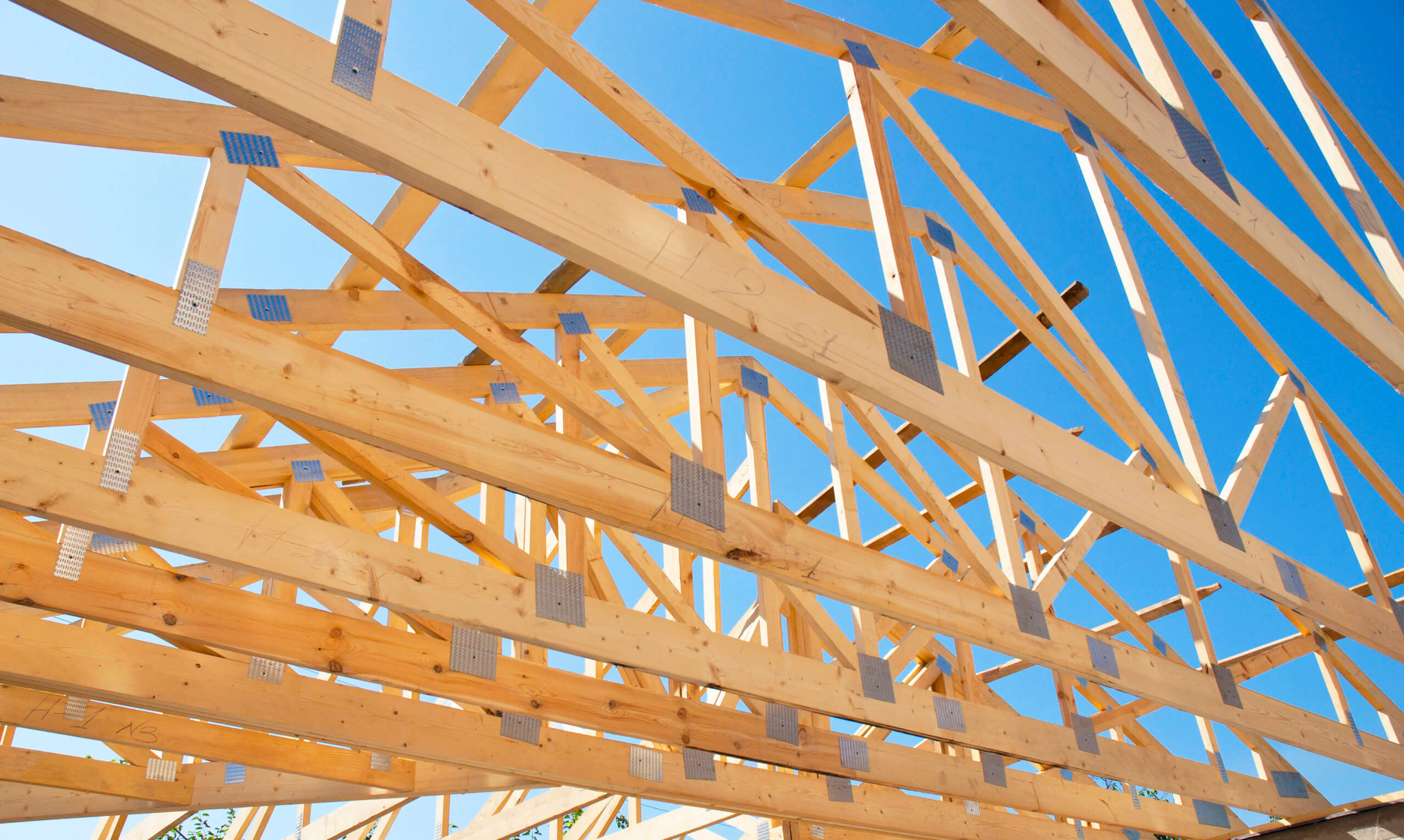Today, wood trusses are the most common way to frame the roof on a wood-framed building.
They offer a high weight-to-strength ratio, long spans, good speed of installation, and a multitude of possibilities for the shape of the roof and the ceiling underneath. Wood trusses can be engineered to span over 25 m (80 ft), and buildings that require large clear spans, such as farm buildings, can also be accommodated.

A truss is an engineered product, where each member and connection are a part of a system. When one portion of a truss becomes compromised, the entire truss becomes compromised. If a wood truss becomes damaged, sometimes the only reasonable course of action is to replace the truss completely. But when only a portion of a truss has been damaged, localized repairs are often a viable option to restore the functionality of the truss.
To better understand the repair requirements of a wood truss, it is important to first understand the forces in a truss. Imagine yourself trying to stand on ice in your dress shoes, with your feet spread wide apart. For most people, this would risk tearing your groin, as your feet will keep sliding apart. To keep your feet from sliding apart, you might take a dog leash, tie it around both ankles, and now your feet are no longer sliding apart. The reason why someone may do this is not clear (just say that you are an engineer, people will understand), but he or she just created a simple truss. The body is a gravity point load, acting downward. The legs are in compression, we will call them “the top chord”. The dog’s leash is in tension, and we will call it “the bottom chord”. Replace the legs and the dog leash with 2x4s connected at the ends with toothed steel plates, and now we have a simple wood truss.

A typical roof truss on a house will likely see different loading conditions than a single-point load at the top. The snow load will be distributed along the top chord, and the drywall that is hung from the bottom chord will also apply a distributed load. So, in addition to the tensile and compressive forces, the typical house truss top and bottom chords will also be subjected to bending and shear forces.
As the span of a truss becomes longer or the loads become larger, the simple triangle truss becomes insufficient, and intermediate members are added between the top and bottom chords, usually splitting the truss into smaller triangles, reducing the spans of the chords and in turn reducing their internal stresses and increasing stability. With these added members comes more flexibility in the truss configuration.
![]()
Image source: https://www.zeelandlumber.com/most-common-types-of-roof-trusses/
Because truss members and connections are subjected to a combination of axial (tension and compression), bending, and shear forces, truss repairs can be a challenging exercise that is sometimes misunderstood, one that requires accurate engineering analysis, detailed repair drawings and specifications, and precise execution in the field. Each repair must be analyzed individually, as the truss configuration, loading conditions, and the location and type of damage will impact the repair design.
Consider a scenario where the bottom chord of a truss has been damaged in the middle of a panel (i.e., between connections). The repair designer must analyze the truss to obtain the forces acting in the bottom chord. The repair can then be designed using industry best practices, and will likely come out to look something like this:

The intent of the repair is to relieve the damaged area of any load by installing correctly sized lumber members or steel plates on the sides, and by installing the correct arrangement of fasteners to safely transfer the load to the undamaged portions of the chord. Nails, screws, or bolts can be specified. Someone who does not understand the forces acting within a truss may be inclined to simply sister the bottom chord, like in repairing or reinforcing a floor joist. This approach is almost always incorrect and will likely result in an inadequate repair, as floor joists are usually only subjected to bending and shear forces, whereas truss members are usually subjected to significant axial forces, in addition to the bending and shear forces. It is often the axial forces that govern the repair configuration.
Another scenario that is commonly encountered is a damaged truss connection. In this case, it is common to add a steel, plywood, or an Oriented Strand Board (OSB) gusset plate over the connection, and fasten it to the adjoining members. The type and thickness of the gusset plate and the type and arrangement of fasteners must be specified based on the forces in the connection from the adjoining members.

Like the types and configurations of trusses, the amount of truss repair details can be endless. The two examples provided in this article are some of the simpler repair scenarios, using readily available materials for the repairs. Truss repairs become vastly more complex when multiple members and connections have been damaged. It is also important to analyze the roof system as a whole, as trusses are strong when they are adequately braced and working as a part of a system, and can be substantially weaker individually. Failure to address lateral bracing when repairing damaged trusses can result in additional deterioration.
Often, the repair requirements are not clear by simply looking at the trusses and a detailed structural analysis must be completed. Seemingly small differences in loading conditions or damage patterns of two identical trusses can result in significantly different repair requirements.
